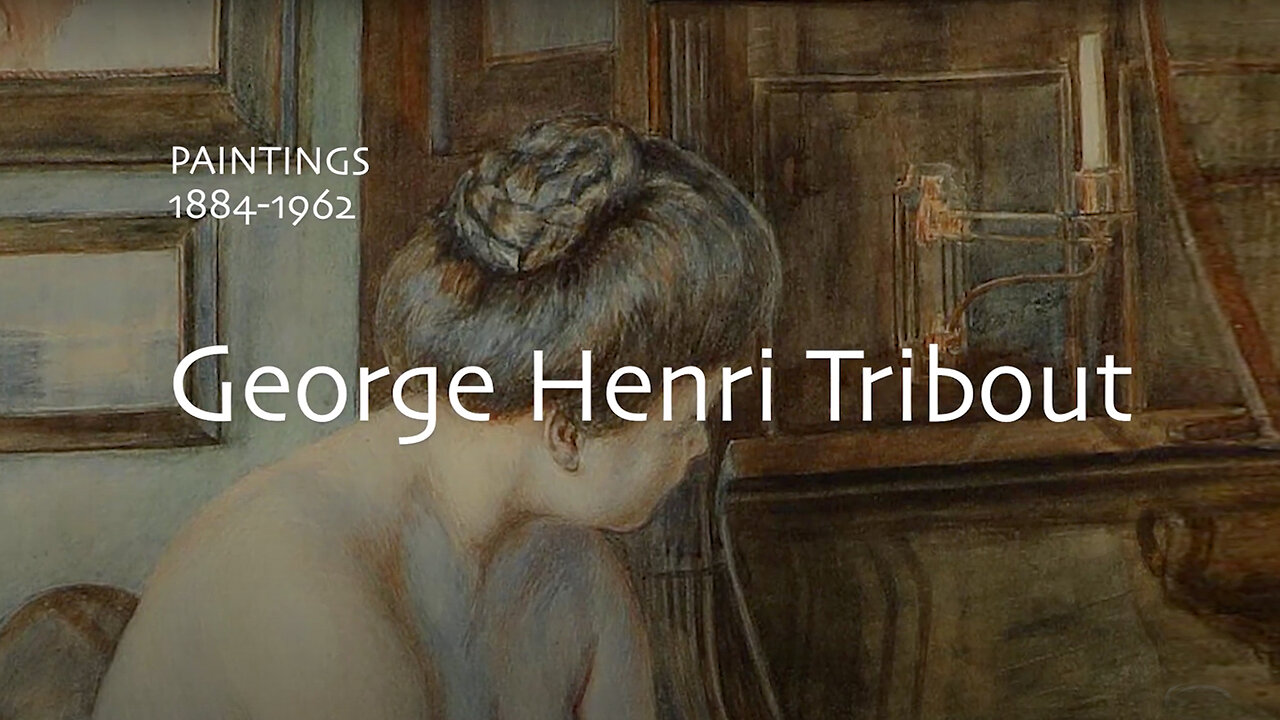Premium Only Content

Georges Henri Tribout - Paintings (1884-1962)
Georges Henri Tribout was a French artist. He studied at the Université de Notre Dame in Boulogne. Tribout attended the Académie Julian in 1904-1905. He started painting in the Cubist style and exhibited at the Salon des Indépendants in 1909, he showed a portrait of his friend Emile Verhauey. After the war he painted landscapes and portraits and exhibited at the Galerie Alligons in Paris, his works were permanently displayed there.
Tribout was included in the expositions of ceramics at l’Exposition des Arts Décoratifs in 1925, in Paris. At this time Tribout also designed posters, costumes theatrical sets and ceramics. From 1930 Tribout became interested in Architecture, forsaking gallery exhibitions. He continued to paint and died in 1962.
Georges Henri Tribout was born in Paris in 1884. After studying at the University of Notre Dame in Boulogne, between 1904 and 1905 he attended courses at the Académie Julian and in 1909 he exhibited his first works at the Salon des Indépendants in Paris. He soon decided to move to Saint Cloud, in the countryside not far from Paris, where his Belgian friend and art critic Emile Verhaeren had lived for some time, thanks to whom he came into contact with some artists, such as Ensor, Montald and Zweig. During the Great War, together with other painters, he joined the "Camouflage" corps of the French army, and once back in Paris he dedicated himself again to painting, mainly creating landscape subjects and portraits. In the early 1920s his production expanded towards new genres, including ceramics, scenography and architecture, so much so that in 1925 he participated in the Exposition des Arts Décoratifs in Paris. He dies in 1962.
Tribout, through his acquaintance with Emile Verhaeren and the painters he supported, had initially strongly felt the symbolist influence, however he soon detached himself from it, reworking the use of light in a post-impressionist key. Starting from the early 1910s, he approaches cubist stylistic elements, which however draw inspiration from Delaunian luminism rather than from the decompositional orthodoxy of Picassian matrix.
The painting The Lovers, presented here, is the spokesperson for these new styles. The work, dated 1919, highlights how the artist, having abandoned the decomposition of the subject hitherto created with small touches of color, began a new stylistic phase in which the contours, rendered with soft chromatic strokes, flanked by a flat color in large fields. Certainly the war years spent in the "Camouflage" section of the army had played an important role in the modulation of the new style. This is evident above all in the backgrounds, sometimes real camouflage textures, as in Gli Amanti himself or in Nudo, a canvas of similar date. However, contrary to what happens in camouflage, the subject remains the protagonist and emerges through the use of an incisive contour line and a significant light. In fact, the two lovers, represented embracing in the center of the composition, stand out in the pictorial space thanks to the cascade of light that breaks on the woman's back and to the marked perimeter of the bodies, given that this already suggests the interest in that shortly thereafter it will become a founding trait of the artist's works.
The recent cleaning works of the work have revealed and brought to light on the back, a painting that Tribout had executed and then covered to reuse its support for The Lovers. The work depicts a woman in the mirror who is combing her hair and stylistically refers, both in the choice of the subject and in the execution, to the works created by the artist between 1909 and 1911. In fact, the composition, built on soft colors, applied in small touches and on an extremely vibrant light, it recalls works such as Les bagneuses, which Tribout had created in 1909, or Nude of 1911, canvases where the Cezannian lesson is permeated by a markedly impressionist legacy.
-
 LIVE
LIVE
Dr Disrespect
4 hours ago🔴LIVE - DR DISRESPECT - METAL EDEN - NEW 2025 SCI-FI FPS LAUNCH STREAM
1,534 watching -
 LIVE
LIVE
StoneMountain64
2 hours agoBattlefield's Easter Egg Phantom Project is STILL ALIVE
190 watching -
 UPCOMING
UPCOMING
Film Threat
20 hours agoMARVEL ZOMBIES! PLUS DEXTER RESURRECTION | Hollywood on the Rocks
313 -
 LIVE
LIVE
Jeff Ahern
1 hour agoNever Woke Wednesday with Jeff Ahern
291 watching -
 13:43
13:43
The Kevin Trudeau Show Limitless
5 hours agoClassified File 3 | Kevin Trudeau EXPOSES Secret Society Brainwave Training
11.2K4 -
 10:04
10:04
Freedom Frontline
2 hours agoBernie Sanders EXPLODES After Starbucks CEO FIRES BACK With Truth
101 -
 LIVE
LIVE
SportsPicks
3 hours agoCrick's Corner: Episode 75
109 watching -
 1:06:30
1:06:30
LindellTV
2 hours agoMIKE LINDELL LIVE AT THE WHITE HOUSE
10.8K -
 1:05:33
1:05:33
Russell Brand
4 hours agoTrump Goes NUCLEAR on China - accuses Xi of CONSPIRING against US with Putin & Kim - SF627
111K46 -
 1:14:47
1:14:47
Sean Unpaved
3 hours agoTrey Wingo's Gridiron Grab
17.2K1